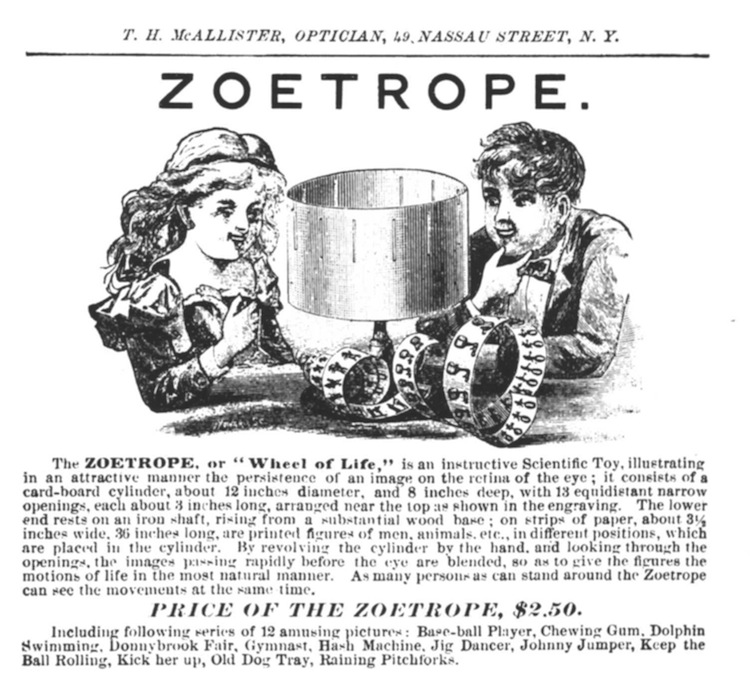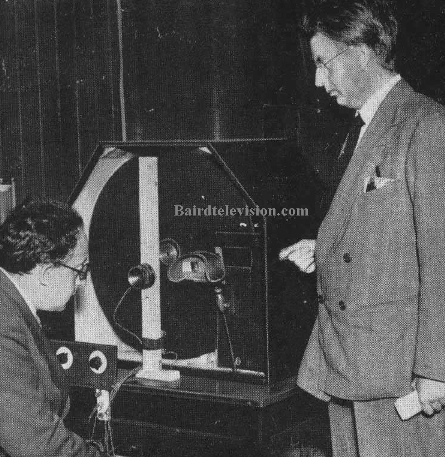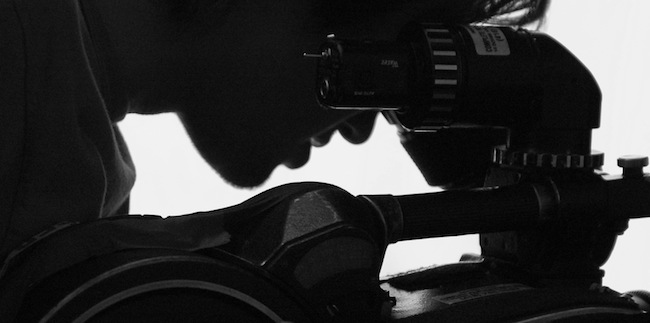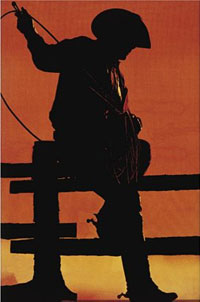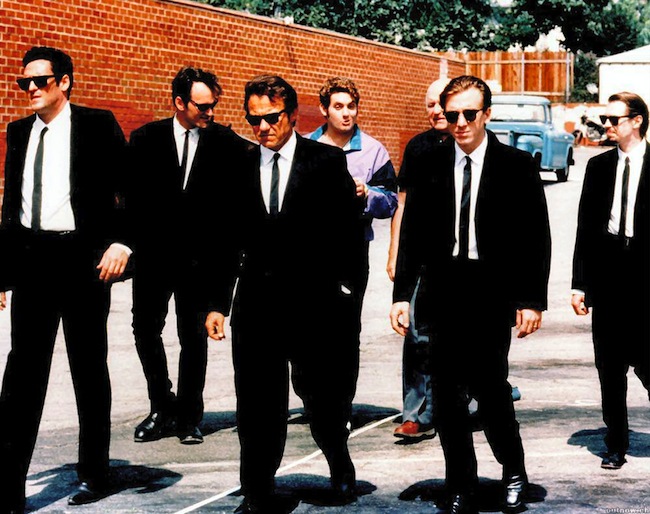Optical toy popular in Victorian times.
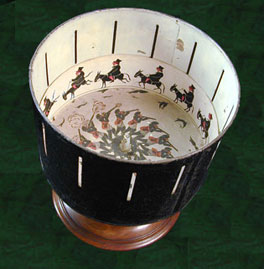 The zoetrope was invented in 1834 in England by William Horner. He called it the ‘Daedalum’ (‘the wheel of the devil). It didn’t become popular until the 1860s, when it was patented by makers in both England and America. The American developer, William F. Lincoln, named his toy the ‘zoetrope’, which means ‘wheel of life’.
The zoetrope was invented in 1834 in England by William Horner. He called it the ‘Daedalum’ (‘the wheel of the devil). It didn’t become popular until the 1860s, when it was patented by makers in both England and America. The American developer, William F. Lincoln, named his toy the ‘zoetrope’, which means ‘wheel of life’.
The zoetrope worked on the same principles as the phenakistiscope, but the pictures were drawn on a strip which could be set around the bottom third of a metal drum, with the slits now cut in the upper section of the drum. The drum was mounted on a spindle so that it could be spun, and viewers looking through the slits would see the cartoon strip form a moving image. The faster the drum is spun, the smoother the image that is produced.
One more development of this kind of toy happened in the nineteenth century – the praxinoscope.

